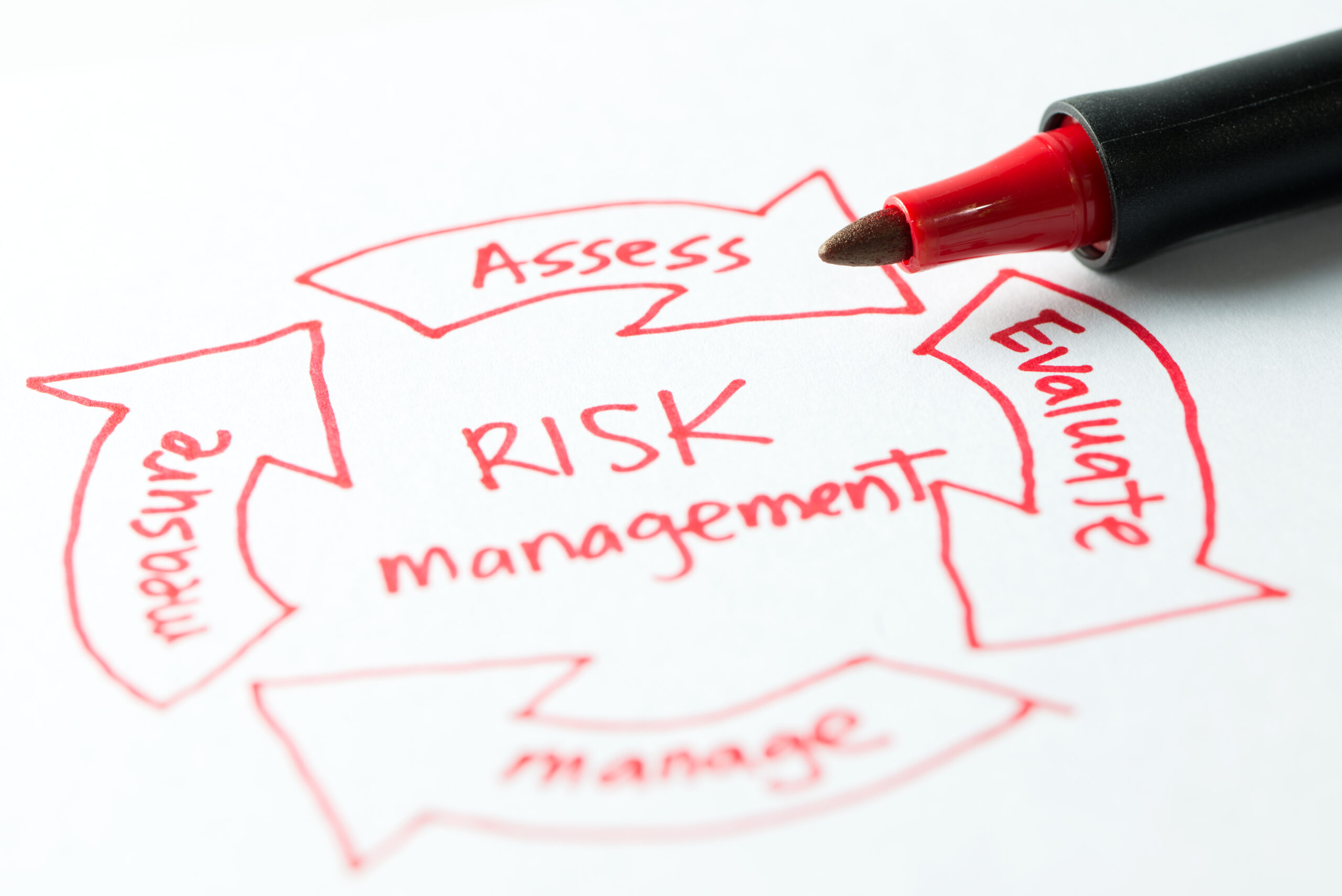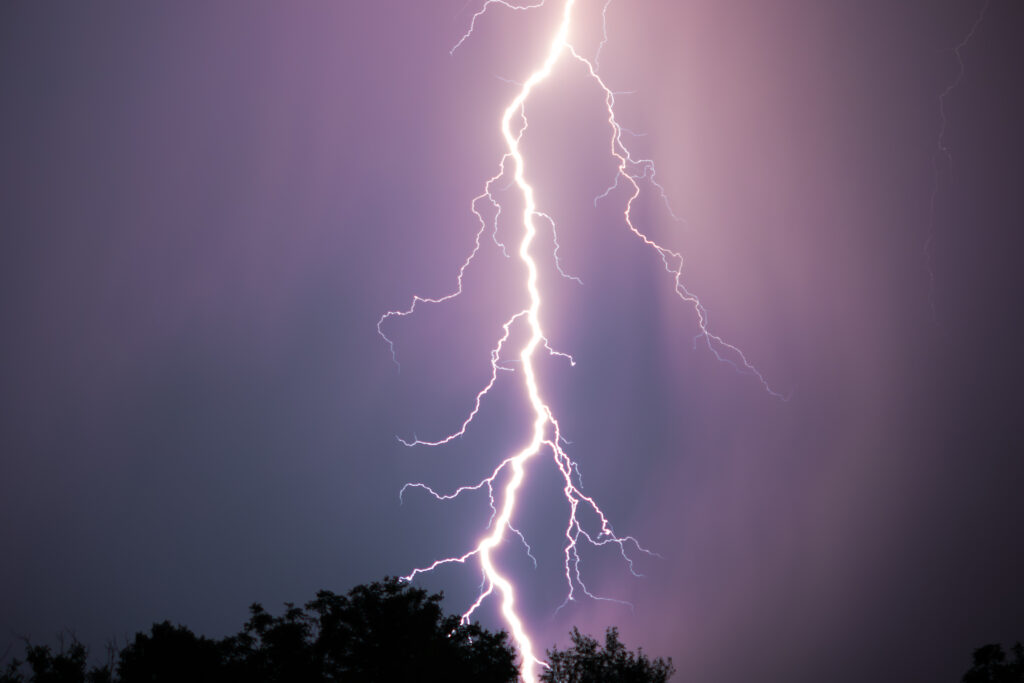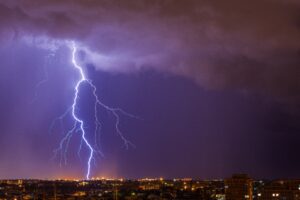A look at the 2025 changes in BS EN IEC 62305
After more than ten years, the British Standard (BS) for protection against the effects of lightning, BS EN 62305, has undergone a technical revision, becoming BS EN IEC 62305, which acknowledges the international standard upon which it is based. Now in its third edition, the document reflects modern risks, the latest technologies and operational realities. If your site relies on legacy risk assessments or older lightning protection systems, now is the time to re-evaluate your risk.
Matthew Waldram, Technical and Compliance Manager at Omega Red provides an overview of some of the key changes, and poses a number of critical questions to ask.
1. Risk management overhaul
What’s new?
The BS EN IEC 62305 risk management process has been comprehensively overhauled.
The concept of types of loss with public relevance has been added.
The concept of a single risk, R, combining loss of human life and loss due to fire, has been introduced, simplifying and replacing the previous four separate BS EN 62305 risk categories.
The concept of the frequency of damage, F, that can impair the availability of internal electrical systems within buildings has also been introduced.
UK relevant data for certain parameters is provided in national annexes NB and NC.

Why does this matter?
This holistic approach forces a more nuanced understanding of lightning risk and the public impact of losses due to lightning can have, especially for high-value or mission-critical sites.
Ask yourself:
- Have we re-run our lightning risk assessments using the new R and F concepts?
- Are we underestimating the business and social impact of a lightning related event?
2. Thunderstorm warning systems
What’s new?
The risk of direct lightning strikes to people in open areas has been introduced, along with the reduction of this risk by the use of a thunderstorm warning system (TWS). A TWS will not prevent a lightning strike, and it isn’t a replacement for a lightning protection system, but it will allow proactive operational decisions to implement temporary preventive measures. These could include:
- halting outdoor work
- moving people to a safer place
- stopping or delaying process activities with a greater ignition or explosion risk
- isolating sensitive systems
Why does this matter?
For some industries, such as public utilities, military, aviation and petrochemicals, early warning could be the difference between safety and catastrophe.
Ask yourself:
- Do we have a TWS in place, alongside our lightning protection system?
- If not, do we need one, and if so, is it integrated into our operational protocols?
- If not, what might the cost of inaction be?
3. Green roofs
What’s new?
Information on the protection of green roofs, including those accessible by people, has been introduced in an informative annex of BS EN IEC 62305-3.
Why does this matter?
The popularity of green roof buildings is increasing worldwide, driven by the desire for environmental benefits such as improved air quality and stormwater management. Biodiverse green roofs also provide habitats for plants and wildlife and help mitigate the effects of climate change. People are likely to spend more time in these pleasant open rooftop environments, especially in populated cities with taller buildings, where their exposure to lightning risk is increased.

Ask yourself:
- Does our building have an accessible green roof?
- If yes, has the lightning risk to its inhabitants been considered?
4. Separation distance, lightning equipotential bonding and surge protection
What’s new?
The application of the general and simplified approaches to separation distance calculation is clarified, with an emphasis placed upon maintaining separation distances between conductive elements. As is already done, where separation isn’t possible, lightning equipotential bonding should be applied, including the use of suitable surge protection devices (SPDs) for cabled services.
Why does this matter?
Dangerous sparking can occur between the external lightning protection system and other conductive elements. Dangerous sparking can cause ignition and fire and poses an electrocution risk to people.
Subsequent surges in voltage can cause the failure of internal electrical systems and equipment and interrupt continued business operation. The application of SPDs can also be crucial in protecting internal systems, such as fire alarms, disabled refuge and evacuation lifts, from indirect lightning effects.
Ask yourself:
- Have we verified the separation distances across all structures?
- Are our SPDs up to the latest specification?
- Could a single surge event compromise our systems and equipment?
5. Lightning protection system (LPS) materials
What’s new?
The BS EN IEC 62561 series of documents is cross referenced throughout BS EN IEC 62305 relating to the selection and installation of reliable, stable, safe and appropriate lightning protection system components.
A new definition of an ‘electrically insulated LPS’ has been introduced, to distinguish it from an ‘isolated LPS’ that is both electrically and physically isolated from a structure or building.

Why does this matter?
It is imperative that all components of a lightning protection system are fit for purpose, and that a whole system of lightning protection measures is suitable for a building under consideration.
Ask yourself:
- Has our lightning protection system inspector verified that our current system is suitable for continued service?
- Could a shortfall in our protective systems leave us vulnerable to the effects of lightning?
Final thoughts
The 2025 edition of BS EN IEC 62305 is more than a technical refresh: it’s a call to action.
Lightning protection is not just about rods and conductors; it’s about risk-informed, system-wide resilience.
So, what now?
- Revisit your lightning risk assessments
- Review your lightning protection systems
- Rethink your operational readiness
Because when lightning strikes, it’s too late to prepare.
Over to you:
- What’s your biggest challenge in aligning with the new standard?
- Have you identified the gaps in your current lightning protection strategy?
- Would a site-wide audit by Omega Red Group help uncover vulnerabilities?
Let’s start a conversation – drop us an email:



